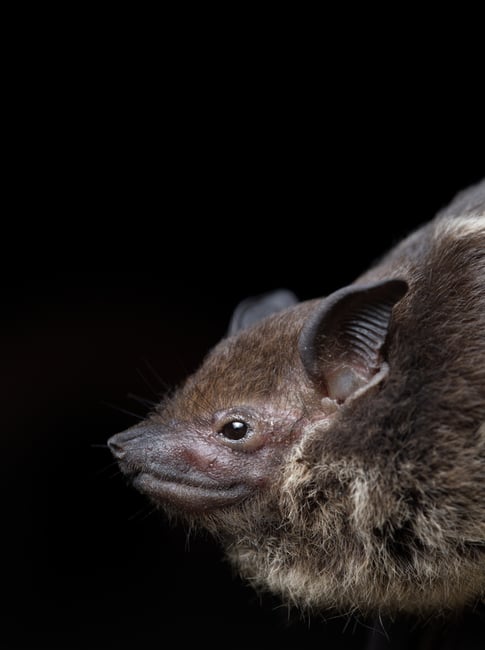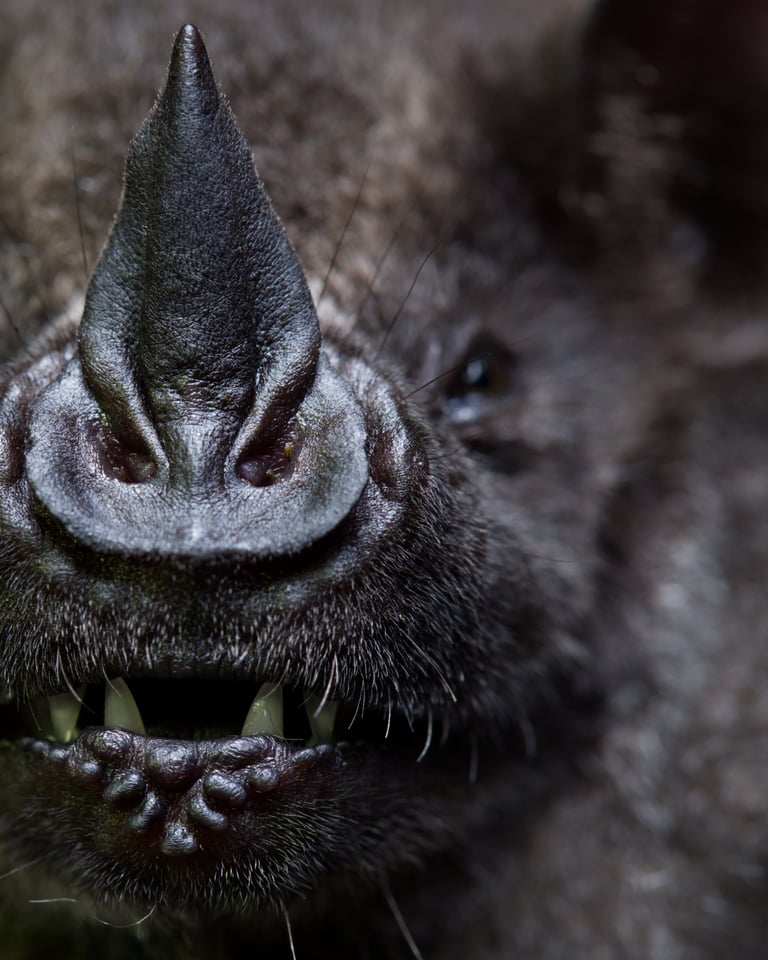What comes to mind when you think of bats? Mysterious flying shadows or blood-sucking vampires? The truth is that most people know very little about bats, even if they live in their backyards. Most wildlife photographers don’t pay much attention to these misunderstood animals as they flit by.
In fact, bats are the only mammals that can truly fly, and they’re also the second most diverse mammalian group, behind only rodents. Bats are also among the most vocal animals, using these vocalizations for communication and echolocation to catch food. Many bats display interesting behaviors, such as making tents out of leaves and creating long-term relationships with one another. But despite these facts, bats are often looked down upon as “flying rats” (even though they are not even rodents).
It’s not common to get a good view of bats, and that’s part of what makes them hard to understand. It is common to see them flying above with only a silhouette in view for a couple seconds before disappearing into darkness. But while working in the Peruvian Amazon, I started participating in bat research. This included learning to handle them safely and take measurements. I was not only able to assist in the data collection from a biologist’s perspective, but also as a photographer. Using my macro lens, I’ve been able to capture and show the tiny overlooked details on the bats.
A common way to survey bat populations is using mist nets. These nets are set up to act as tall wall several meters wide, so that bats hit the net and get caught in pockets. The material is incredibly thin, so that bats don’t detect the nets with their echolocation.
This doesn’t harm the bats – and, in fact, the bats often destroy nets, chewing gaping holes and freeing themselves. After bats are caught in the nets, they are untangled and extracted. We check the nets about every 20 minutes to get them flying again, continuing their night of foraging with minimal stress.
Data collection takes about 15 minutes. This includes morphological measurements (weight, tibia length, ear length, etc.) , wing condition, population demographics (sex and reproductive status), and, arguably most important, species identification.
Many species of bats are difficult to identify at a species-specific level – sometimes even impossible unless holding them in-hand. Identification can depend on small details that can be easily overlooked with the naked eye. Sometimes, the only distinguishing features are in details like the cusps of teeth, how many colors a strand of hair has, or tragus shape (the inner cartilaginous structure on the ear). Macro photography allows for a better look at these details.
Rhogeessa io, known as Thomas’s yellow bat, is one example of a species where you need to look at small features to identify it. Just to differentiate between the two genera Rhogeessa and Myotis, we need to look at the number of upper incisors (Rhogeessa having two and Myotis having four). Some species of Myotis are identified by the placement of their upper pre-molars, a very faint difference. These teeth are less than a millimeter wide, so getting macro photos of the mouth can really help in identification.
Below is a portrait of Rhogeessa io, a small bat with similar looking features to other species.
This portrait is of a species from the Myotis genus, very similar looking to Rhogeessa io.
Teeth are a key identifying feature when it comes to determining species of bat. We can tell this is a Rhogeessa io and not a species in the genus Myotis by its teeth. Rhogeessa has 2 upper incisors, while Myotis has 4.
A closer look at the fur of Rhogeessa io. Bat fur color and the number of colors on an individual strand of fur can be an indication of species.
Identification of bats can be quite the process! Particularly because these differentiating features are often quite tiny – sometimes the whole bat is just the length of a thumb. My macro lens serves as an excellent tool to expedite this process. With knowledge of the identifying features, I can snap some photos while someone holds the bat, making identification quicker and more accurate.
After data collection and identification, I sometimes have a chance to take bat portraits. I keep my macro lens and diffuser set up so that this process doesn’t extend the amount of time the bat is in-hand. I try to switch up the composition, sometimes focusing on extremely small details of the face, then backing up to get a more complete profile. If possible, I’ll ask one of my colleagues to hold the diffuser and use it externally. This gives me more control over the light and allows me to capture the best possible portrait.

If the bat is being held, I usually don’t want the person’s hand to be in the photo. I prefer the focus of the photo to be features of the bat itself, not the orange gloved hand in the corner. But sometimes in order to safely hold the bat, the glove has to be in the photo. Usually, I can crop it out of the frame later, or make a gradient mask in post-processing to lower the exposure almost all the way down. This focuses the viewer’s attention on the main subject of the photo.
After working with bats, my opinion of them completely changed. I used to think about them as the flying silhouettes chirping in the jungle, not looking twice as they passed in dark shadows. But seeing them up close surprised me like no other animal has. It let me observe unique behaviors I had never seen in other animals, like the twitching of their nose to echolocate. Even their texture fascinated me, with wings that feel like a balloon and fur softer than that of most other mammals I’ve felt.
Photography gave me a way to share this perspective of bats. I want these photos to offer the same sense of wonder and intrigue that seeing these bats did for me. Hopefully when people know more about these remarkable species, a more nuanced image pops into their heads when they hear the word “bat”.









Very interesting article, thank you.
“What comes to mind when you think of bats?”
Covid 19 and STUPID people that are bothering wild animals who are known to carry some VERY nasty viruses that can and do jump spieces.
That is what comes to mind son. Get another hobby or even better, find less nasty and vile creature to handle.
Bats are beautiful creatures and we should care for them and respect them. And, the majority of bats, when handled properly for research, certainly will not transmit crazy viruses…in fact, the transmission of viruses to humans happens mainly in overcrowded and unsanitary conditions for animals.
Very interesting article and beautiful intriguing bat portraits! well done
I did some photo works for a field biologist some 15 years ago, loved that experience working with bats;
pbase.com/graphad/bats
Thank you for such an interesting article. I have always been fascinated by bats and this helped me learn even more about them. It is so interesting to see such amazing and rarely seen images of these elusive creatures. Nice work!
very interesting article of these little understood animals. I once saved a young bat from drowning in Mexico. Luckily it survived!
Thank you for the interesting article and photos. Like you, I use photography to focus (no pun intended) on the world around us, filtering out everything else.